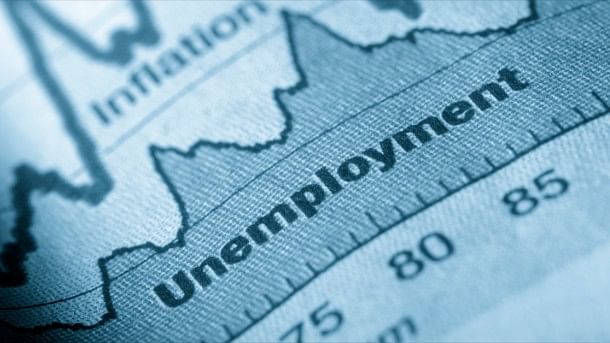
Unemployment representative image.
Credit: iStock Photo
"Mr Modi’s India is an experiment in how to get richer amid deglobalisation and under strongman leadership. Whether it can grow fast and avoid unrest over the next 10–20 years will shape the fate of 1.4 billion people and the world economy," says The Economist in a recently published opinion piece.
First, the facts: The Indian economy is expanding at an annual growth rate of 6–7 per cent. S&P Global forecasts that India, the world’s fifth-largest economy, will grow at an average rate of 6.7 per cent between fiscal 2023–24 and fiscal 2030–2031. India’s gross domestic product (GDP) reached $3.4 trillion in FY23, translating into a per capita income of $2,450 for its 1.4 billion people, ranking around 136 globally in terms of per capita income. Projections indicate that India’s per capita income will grow to $4,000 by FY 2030.
According to the World Bank Country and Lending Groups, economies with a gross national income (GNI) per capita between $1,136 and $4,465 are classified as lower-middle income, while those with a GNI per capita between $4,466 and $13,845 are upper-middle-income. High-income economies are those with a GNI per capita of $13,846 or more. Despite sustained annual growth of 6–7 per cent, India is projected to remain in the lower middle-income bracket even by 2030. Achieving the status of upper-middle-income economies within the next decade would require India to grow at a rapid rate of 9–10 per cent in the next 10 years, akin to China’s growth post-liberalisation in the 1990s, which averaged 11.7 per cent.
In the three decades following the economic reforms of 1991, India’s growth has averaged 6.4 per cent annually. However, it has averaged 5.6 per cent during the decade of Narendra Modi’s rule, but that has been in line with a broader slowdown in global growth affected by a pandemic and geo-political conflict.
Concerns about low per capita income are further compounded by regional economic disparities within India. Uttar Pradesh (UP), India’s most populous state with a population of 240 million, remains one of the country’s poorest states, with a nominal GDP per person of $1,000, which is less than half the national average.
Booming stock markets and the increasing number of billionaires do not make a country’s economy strong for a nation as populous as India. The elephant in the room is spiralling unemployment, especially among the youth. Out of a working-age population of about 100 crore people, only about 10 crore have formal jobs, leaving the rest trapped in informal or underemployed roles.
India’s annual GDP growth rate of 6–7 per cent is translating into a much lower job growth rate. Employment growth has stagnated at 2 per cent for the past two decades. If the employment growth rate does not reach 4–5 per cent, absorbing the surplus labour will be impossible. To reach a near-full employment situation, India needs to grow at a rate of about 10 per cent, with a particular focus on the small and medium enterprise sector, agribusiness, and labour-oriented industries.
Though India’s 6-7 per cent growth rate is creating wealth for the top 10 per cent of the population, the rest of the people are stagnating. India may not be “the next China”—a manufacturing-led miracle. India is developing at a time of stagnating goods trade and factory automation. India’s lower labour productivity compared to China’s labour productivity and its higher wages make it difficult for the country to become a global factory. However, the Indian government’s elevated spending on infrastructure is cushioning the employment situation to some extent. Private sector investments are conspicuous by their absence.
A bigger IT and services sector and a cluster of export-oriented industries in sectors like food processing, garments, leather, handicrafts, auto ancillary, defence, etc. can be a trodden path to create mass employment. For this, India would have to transform its education system
and enable much more internal migration of labour from the populous North Indian states to southern and western cities.
To create a new reform agenda, foster a thriving knowledge economy,
and reap the demographic dividend, a paradigm shift is needed in India’s
policy framework, tax structure, socio-democratic thinking, and institutional framework.
(The writer is a retired corporate professional)